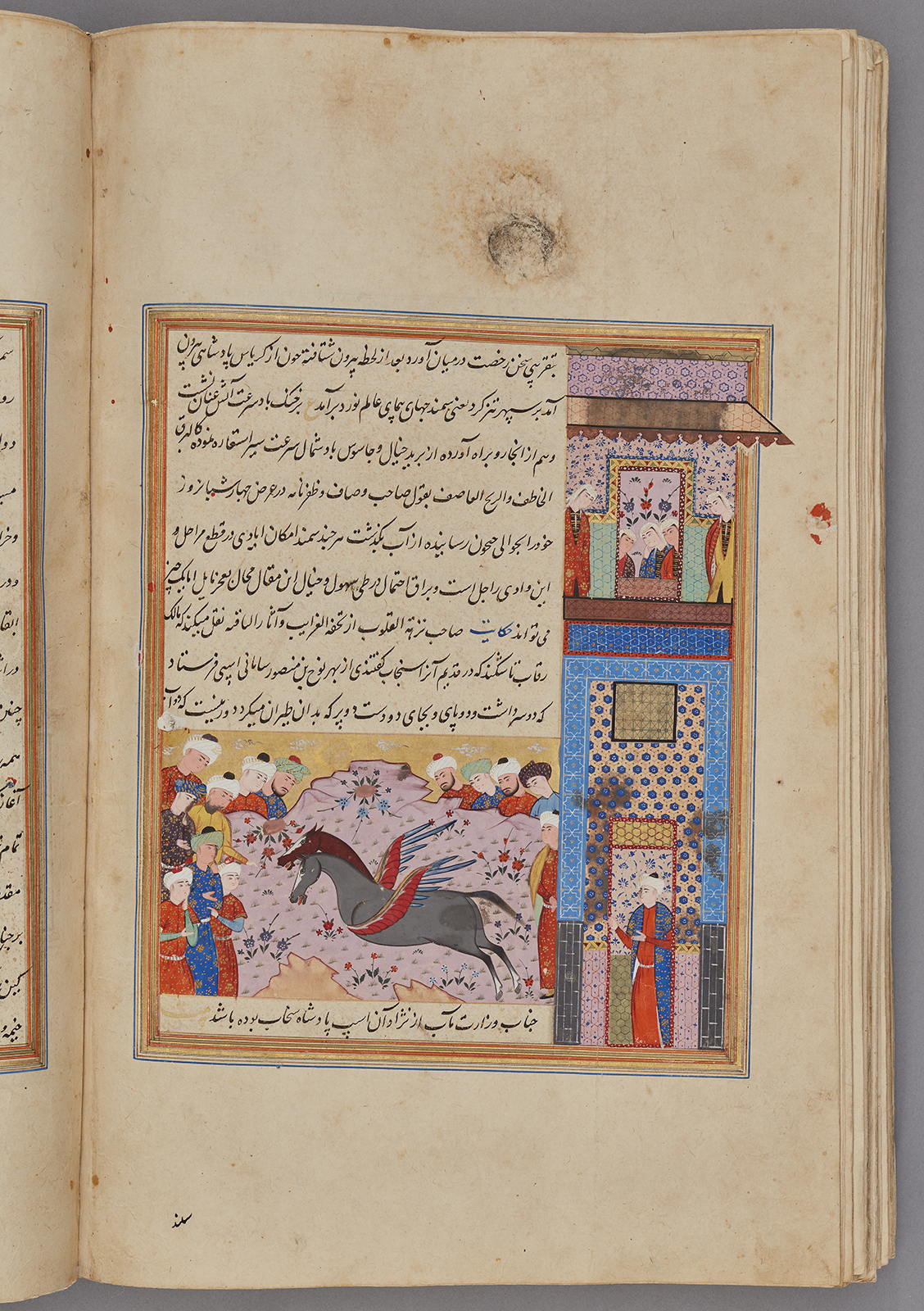Click on the image to zoom
A warning incident (Courtiers marvel at a monstrous two-headed horse), Folio from a manuscript of Nigaristan
- Accession Number:AKM272.f217v
- Creator:Author: Ahmad b. Muhammad Ghaffari, Persian, died 1567 Scribe: Ahmad al-Shirazi
- Place:Iran, Shiraz (probably)
- Dimensions:38.7 cm × 25 cm × 6.4 cm
- Date:1573-74 CE/980 AH/AH 980
- Materials and Technique:Ink, opaque watercolour, and gold on paper
The miniature painting "A warning incident" is from an intact manuscript of Kitab-i Nigaristan, a collection of anecdotes and historical incidents written in prose by the historian and scholar Ahmad Muhammad Ghaffari (1504–1567/68) of Kashan in 1551–2. This illustrated manuscript, dated 1573, was probably produced in a Shiraz workshop.
See AKM272 for more information about the manuscript and links to the other illustrations.
Further Reading
The layout of the illustration is divided into two vertical spaces. The main scene, which is the scene of the miracle, is shown between two text boxes. It depicts a horse with two heads—one grey and one brown—within a steppe landscape. Instead of legs, the horse has red wings with blue tips. The surrounding figures are gazing at the horse. The right field in the picture, which takes up the entire height of the image, represents a façade decorated with tiles and bricks.
In this folio, the upper text field takes up quite a lot of space and its nine lines occupy two thirds of the left-hand section of the page. All lines but the last two are actually from a previous anecdote; however, both anecdotes deal with the same person, Buraq, a great grandson of Chagatay, who was governor of Tashkent. He is said to have been a scheming person who increased his empire with intrigues and cunning. It is he who sends the two-headed horse with wings to the Samanid [1] ruler Nuh ibn Mansur as a gift. It turns out, however, that this gift is part of Buraq’s plot to conquer Khurasan.
The narrative genre of the nadira, meaning peculiarity, includes anecdotes about oddities and miracles that have a historical or literary source and are narrated in a historical context. These strange events and miracles occur to rulers, scholars, viziers, and ordinary people in Iranian history from the introduction of Islam to the time of the Safavids (1501–1677). These anecdotes often contain a moral lesson.
- Elika Palenzona-Djalili
Notes
1. The Samanid dynasty ruled Khurasan from 819 to 999. The empire was centred in Khurasan and Transoxania.
Note: This online resource is reviewed and updated on an ongoing basis. We are committed to improving this information and will revise and update knowledge about this object as it becomes available.


